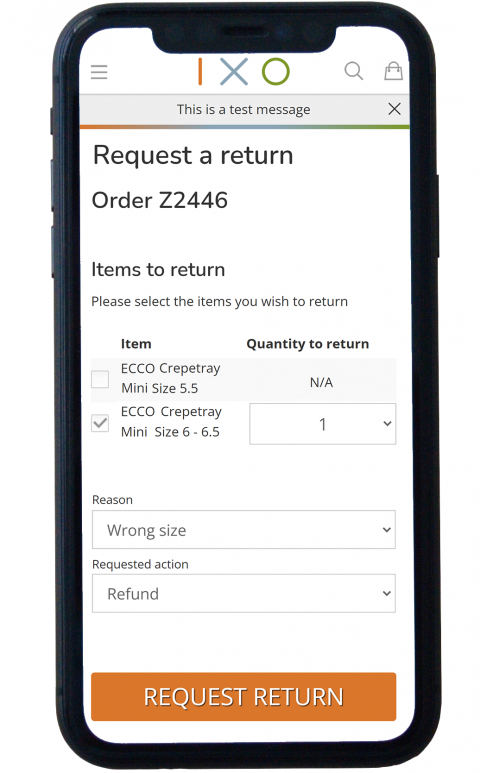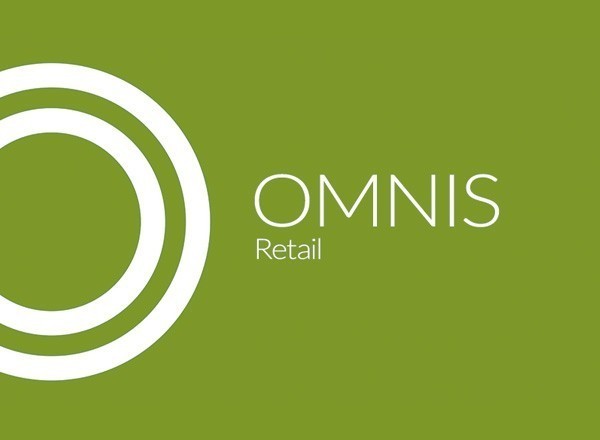How to turn a returns process into an asset
Returns can be a good thing
How costly are your returns?
Returns are an expensive, but necessary, part of any retail business. The trick is to manage the process efficiently, and turn an irritation into an opportunity.
Many eCommerce businesses face higher rates of return that bricks and mortar retail, but in a world where omnichannel and Unified Commerce are becoming the norm, all retailers need to address this problem.
Unified Commerce platforms like OMNIS Retail retain all of your customer, order and product information in one database. You can use these to weed out fraudulent returns, upsell your customers and improve retention.
RMA by Iconography
You can turn a proper Returns process into a net gain for your business, provided your RMS can support you in the right way.
Returns; a problem or an opportunity?
Returns rates can turn a profitable business into a loss maker, and companies have to account for that in their planning. In store, experienced and well trained salespeople can keep returns and exchanges to a minimum, helping customers check the fit, experience the look and feel of a product, or just advise on its suitability to the customer. However, rates of eCommerce returns tend to be a lot higher. Worse, experienced eCommerce trader quickly see that rates of return will vary depending on product or brand, but the biggest variance is between product types.
The rate of eCommerce returns on electricals and homewares tends to hover around 10%, but in fast fashion, returns can easily reach 40%, as customers order multiple sizes to ‘try before they buy’, simply returning those that don’t fit. That leaves you in the retailer footing the bill for the delivery of items that the customer was never going to keep, as well as the cost in manpower of sorting and restocking the returned goods.
How much revenue is lost to returns? The answer is always more than anyone would want, but what many retailers don’t consider is how much they’re losing by not having a flexible returns policy. With two thirds of customers actively reading returns policies before purchase, you can’t afford to scare anyone off. Customer service is one of the ways that retailers can distinguish themselves online, so whether it’s guaranteed refunds, or free shipping labels, you need to consider how best to serve your customers.
If you’re worried about the escalating cost of returns, simply remember that 95% of customers who are happy with a returns process will place repeat purchases. On the flip side, shoppers who don’t like your returns process are three times as likely to abandon you for your competitors.
A good returns policy should be simple
Writing a returns policy
It’s not that hard to write a returns policy. The tricky part is finetuning the standard template to work for you, your business and your products. All returns policies should fit broadly into the following steps:
- Define the timeframe in which you will accept returns
- Define under what conditions you will accept returns
- Explain how the customer should return the products to you
- Explain how the customer will receive a refund
However, it’s essential that you make returns economical, as best you can. That means thinking through the pain points and reducing them as best you possibly can. Considering your products is a great place to start, and don’t hesitate to have multiple policies; you shouldn’t offer the same terms conditions on Made to Order and Stock items, for example.
To get you started, we’ve put together a few things to consider:
Clear information
Your returns policy should be clear and easy to find; a dedicated landing page is good, but it’s better to detail it on product pages too.
Easy requests
Make sure it’s easy for your customers to request a return; an online form is good, but also consider including a returns label with the despatch note.
Restocking fees
Don’t be afraid to charge restocking fees, especially on Made to Order items; a lot of furniture retailers charge 10-30% of RRP!
Free shipping
Free returns (retailer pays postage) is the holy grail of customer service, but it’s the one that’s going to hurt your bottom line!
A good returns policy doesn't mean more returns
How to minimise your returns
Sadly, there’s no hard and fast rule when it comes to reducing your eCommerce return rate; what works in one industry might not in another. Still, there are some general things to aim for, and others to avoid.
Product Information
Get as much information on your product page as you can. Whether it’s size guides, dimensions, care guides and specification sheets, the more a customer understands a product, the less likely they are to purchase an inappropriate product. Bonus points if you can show the product in use through video content.
Offer Alternatives
With appropriate use of features like ‘related products’ and ‘customers who bought this also bought’, you can give customers easy access to items similar to that which they’re considering buying. This increases the chances that they’ll buy something that they actually want.
Free Samples
Where you can, offering free samples of materials can really reduce customer service problems with Made to Order items like sofas and curtains, or products like carpets and wallpaper.
Fast Fashion
Online apparel retailers like BooHoo and Asos have changed the face of eCommerce. Their customers have come to expect alternative payment methods like Klarna and ClearPay. This payment model allows someone to buy as much as they want, and pay for whatever they keep after 30 days, leading to extremely high rates of return. There are significant benefits to the retailer in terms of conversion rate, but if you’re looking at these platforms, take a moment to consider the implications before signing up. Traditional payment methods are more likely to keep your return rate low.
Don't lose money with your returns; they can be an opportunity
Omnichannel returns
When we’re talking about online returns, the tendency is to focus solely on eCommerce. However, with the rise of omnichannel and Unified Commerce, customers aren’t simply looking to return eCommerce orders online.
Returning online orders when a customer comes in store is now commonplace, but the opposite is equally important. If you want to offer a unified experience to your customers, allowing them to interact with you on their terms, you need to consider how to handle these requests.
Unified Commerce platforms like our OMNIS Retail come with these solutions built in; the customers simply need to use their order number (either from an eCommerce order confirmation or instore receipt) to initiate the returns process.
Return Merchandise Authorisation (RMA) process
A unified RMA process gives you the tools to manage and review returns across all channels. This will allow customers to buy online and return in store, or to buy in store and return online.
All customers need is proof of purchase (in the form of an order number) and your Unified Commerce platform can take care of the rest; customers can request a return online, or request an exchange or ask for a refund in store too.
Every return is tracked from initial request, through to receipt of goods, review of the stock and acceptance or denial of a refund. You can keep track of which salespeople have the highest rates of return, as well as which brands, collections and products are returned most often.
Incoming items can be marked as damaged, or immediately restocked for resale across all channels.
Create customer care follow ups to drive your aftersales service with automated notifications sent to your staff.
With a clear and simple returns, you can provide a frictionless experience for your customers, and the easier your returns process, the more likely they are to come back.


Online and instore retail
OMNIS Retail is a pioneering new retail solution that has been driven by D2C brands & niche retailers looking to the future. A single database eliminates any data integration issues between outdated systems, instead providing a cloud-based omnicommerce retail solution fit for the 21st century.
With the new site, our internet sales were up 62% in 2019 compared to 2018
George, Perry's Cider
Get in Touch